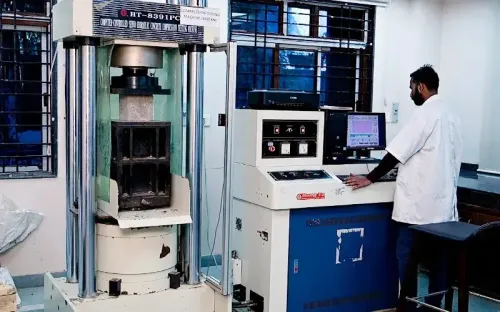How is NIT Rourkela’s New ECG Lead System Transforming Heart Rhythm Diagnosis?

Synopsis
Key Takeaways
- Innovative ECG lead system enhances heart rhythm diagnosis.
- Improved detection of atrial arrhythmias can save lives.
- Does not require modifications to existing ECG machines.
- Research published in reputable international journals.
- Facilitates timely medical intervention to prevent serious conditions.
New Delhi, May 15 (NationPress) Researchers at the National Institute of Technology (NIT) Rourkela have unveiled a groundbreaking enhancement to Electrocardiography (ECG), aimed at detecting abnormal heart rhythms that can result in severe health issues like atrial fibrillation, potentially leading to strokes.
ECG remains a widely utilized method for monitoring heart function.
This innovative lead placement system, known as the Atrial Lead System (ALS), facilitates the detection of subtle electrical signals originating from the heart's upper chambers, which are often too faint to be accurately captured in standard ECGs. These signals are vital for recognizing abnormal heart rhythms, which contribute to a significant number of cardiac-related fatalities globally.
Atrial arrhythmias, characterized by irregular rhythms in the heart’s upper chambers, are particularly prevalent, especially in hospitalized patients. Early detection of these arrhythmias enables medical professionals to initiate timely treatment and avert complications.
An ECG records the heart's electrical activity through electrodes attached to the body. Doctors typically examine the P-wave, which represents electrical activity in the heart's upper chambers. However, P-waves are frequently small and can be obscured by background noise, complicating the detection of atrial arrhythmias.
The ALS employs a modified configuration to enhance the recording of electrical activity from the atria. By amplifying these signals, particularly the P-wave, the system significantly improves the accuracy of arrhythmia detection, benefiting both healthcare providers and computerized diagnostic systems.
“We have introduced innovative electrode placements that greatly enhance the visibility of atrial activity in ECG readings. This improved signal clarity allows for faster analysis and more informed clinical decisions,” stated Dr. J. Sivaraman, Research Lead and Assistant Professor in the Department of Biotechnology and Medical Engineering at NIT Rourkela.
Significantly, the new system does not require modifications to existing ECG machines. The innovation is solely in the lead placement methodology, allowing for easy implementation in both public and private healthcare facilities without incurring additional costs.
The research findings have been published in several international journals, including Biomedical Signal Processing and Control, Medical Hypotheses, and Physical and Engineering Sciences in Medicine.









